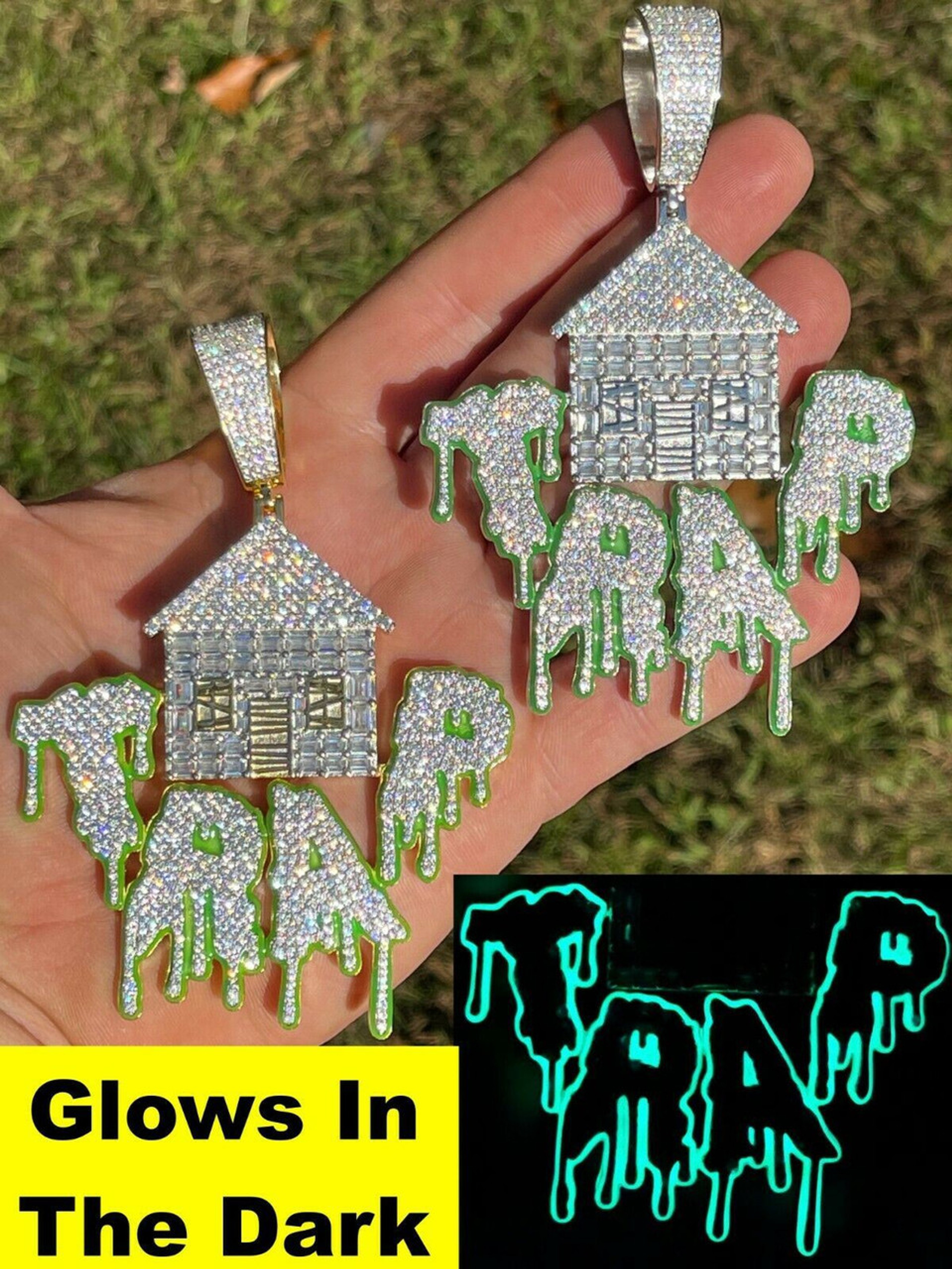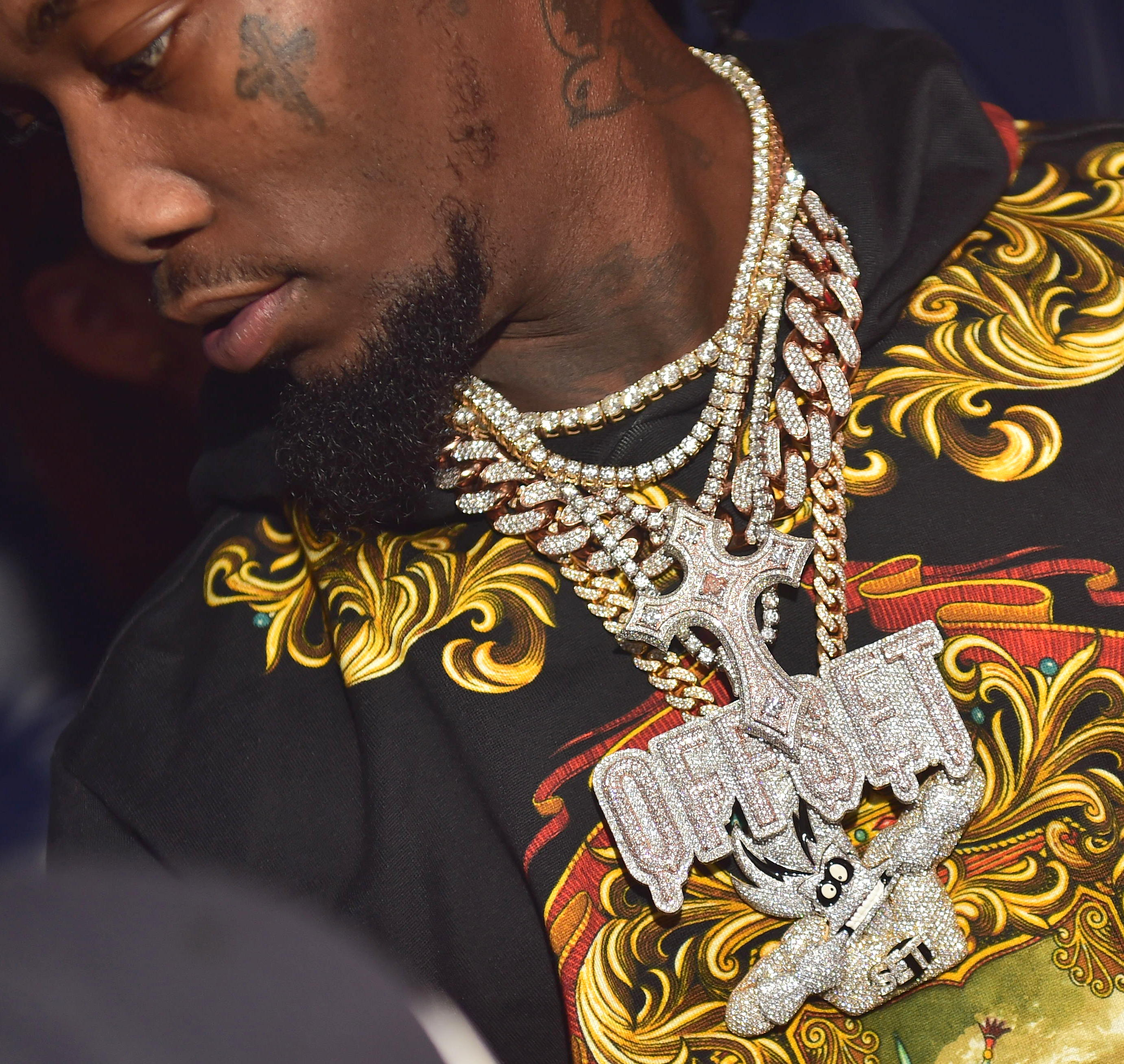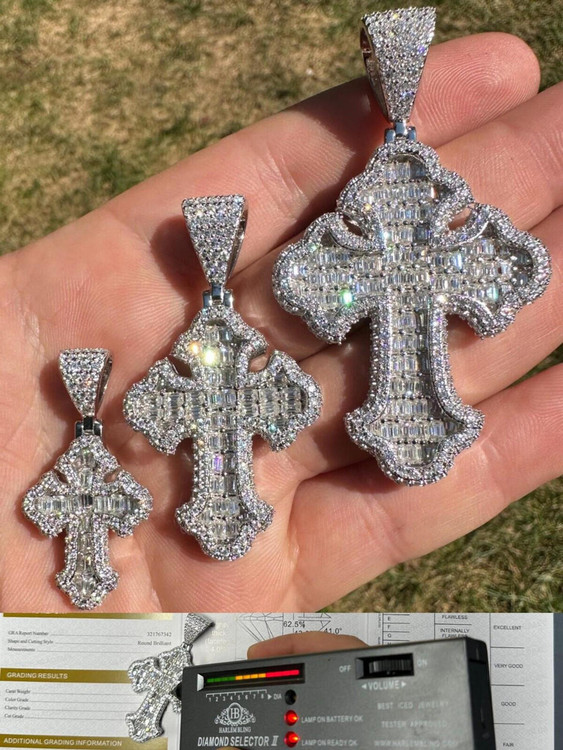From Jay Z to Lil Nas X: The Evolution of Rapper Jewelry in Hip Hop History
Posted by Eddie R on Jan 4th 2024
Rapper jewelry has become synonymous with the flashy and extravagant lifestyle often associated with the world of hip hop. From oversized chains and diamond-encrusted watches to grills and pendants, rapper jewelry has become a symbol of wealth, success, and status within the genre.
However, this iconic style of bling didn't emerge overnight. In fact, it has evolved significantly throughout the history of hip hop, reflecting the changing trends, influences, and personalities of the genre. Let's take a journey through the evolution of rapper jewelry in hip hop history, from its humble beginnings to its modern-day status as a staple in the world of fashion and music.

The Bold Beginnings of Rapper Jewelry in Hip Hop
In the dawn of hip hop, artist's accessories were far from understated. Think large gold chains, thick rope necklaces, and colossal gold rings — it was a time when the mantra seemed to be "go big or go home." Pioneers of this era like Run DMC, Slick Rick, and LL Cool J turned their jewelry into more than just a fashion statement. It became a badge of honor, a testament to their success and the wealth they had attained through their talent and hard work.
This was an era when hip hop was just beginning to find its voice and foothold in mainstream culture. And these early artists knew how to make a statement. Run DMC wasn't just wearing a chain; they were draping themselves in multiple thick gold chains, practically becoming a walking statement of success. LL Cool J wasn't satisfied with a simple gold ring; he needed a pinky ring that could blind you from across the room.
Meanwhile, Slick Rick's affinity for jewels and gold was so profound he was nicknamed "Ricky D" and "The Ruler." From his necklaces to his iced-out eyepatch, his style remains a legendary symbol of hip hop's flashy beginnings.
The extravagant jewelry of these early hip hop artists set a golden standard (pun intended) for the future of rapper jewelry. It paved the way for the bling culture we see today, creating a tradition of celebrating success and expressing personal style through one's choice of accessories. These early artists made it clear that in hip hop, your jewelry is more than just a part of your outfit — it's a reflection of your journey, your success, and your identity.
What started as a bold expression of newly found success, soon evolved into a signature style and eventually, a norm. This era of ostentatious displays of wealth through jewelry created a precedent that would be followed, amplified, and redefined by future generations of hip hop artists. The bold beginnings of rapper jewelry in hip hop were indeed the golden era of audacious expression and unabashed flaunting of success.

The Influence of Gangsta Rap on Rapper Jewelry
The 1990s was a significant period in hip hop history as it welcomed the era of gangsta rap, consequently influencing the dynamics of rapper jewelry. Noteworthy artists like Tupac Shakur and The Notorious B.I.G were prominent figures of this era, known for their unique lyrical prowess and their distinct aesthetic tastes. This was an era where jewelry became more than just a display of prosperity. It became a canvas for rappers to convey their personal beliefs, affiliations, and stories.
One of the unique characteristics of this era was the incorporation of religious symbols into the jewelry. Large, bold cross pendants and Jesus pieces, typically studded with diamonds or crafted from solid gold, were worn as a testament to the artist's faith. It was not uncommon to see Tupac sporting a diamond-studded cross necklace, not just as a fashion accessory, but as a statement of his personal and spiritual beliefs.
In addition to the religious motifs, this period also marked a shift from predominantly gold pieces to diamond-encrusted jewelry. Diamonds, with their timeless allure and undeniable brilliance, began to become the focal point of rapper jewelry. This was the seed that eventually grew into the bling era of the 2000s. The diamond-encrusted Jesus pieces worn by Biggie Smalls served as a precursor to this trend, showcasing an extravagant display of wealth and hinting at the diamond-studded aesthetic that would soon take over the hip hop jewelry scene.
Gangsta rap played a significant role in evolving the aesthetic of rapper jewelry from its bold gold beginnings. It brought about a new dimension to the narrative, transforming jewelry from just a symbol of success to a medium of personal expression. This period in hip hop history was a stepping stone that bridged the flashy gold era of the 1980s to the diamond-infused bling era of the 2000s, significantly influencing the trajectory of rapper jewelry trends. This era was about more than just the music; it was about the evolving identity of the artists and the culture they represented.

The Bling Era and the Reign of Diamond-Encrusted Jewelry
Diamonds reigned supreme in the early 2000s, marking the onset of the 'bling era' in hip hop culture. It was a time when rap artists like Jay Z and Lil Wayne took extravagance to a whole new level, sporting multi-carat diamond chains, wristwatches, and even teeth grills. This era was synonymous with decadence and exuberance, where the motto seemed to be "the more, the merrier," and diamonds became a rapper's most coveted companion.
It wasn't just about flashing diamonds though; this era marked a significant trend in custom-made pieces and brand collaborations. Jay Z's partnership with luxury jewelry brand, Tiffany & Co, for example, gave birth to unique pieces that perfectly married hip hop's boldness with the timeless elegance of a renowned brand. Likewise, Lil Wayne's custom-made diamond teeth grills became a symbol of his extravagant persona, going beyond mere accessories to become an integral part of his identity.
Notable in this era was the popularization of iced-out pieces, where each part of the accessory is completely covered in diamonds. The rap artists pushed the boundaries of opulence, transforming pieces from mere necklaces and rings to fully iced-out pendants and earrings. Every inch of metal was hidden beneath layers of glittering, light-catching diamonds. Iced-out jewelry quickly became a visual metaphor for success, translating the accomplishments and stature of the artists into tangible, awe-inspiring pieces.
However, the bling era wasn't just about the sparkles and glitters. It was an important phase in the evolution of rapper jewelry, serving as a bridge from the gold-heavy aesthetics of the early hip hop days to the diverse and ever-evolving trends of the current times. It set the stage for artists to experiment with their style, pushing boundaries, and continuing to redefine the relationship between hip hop and jewelry. This era was indeed a celebration of opulence, but it was also a testament to the ever-evolving identity of hip hop culture, beautifully crystallized in the form of diamond-encrusted jewelry.

The Modern-Day Minimalistic Approach to Rapper Jewelry
As the rap scene moves forward, there's a new trend emerging among hip hop artists: minimalism. The era of massive chains and chunky rings is evolving, with artists like Drake and Kanye West leading the way towards a more refined aesthetic. But don't be fooled, while the pieces might be smaller in size, they're still every bit as impactful and significant.
While previous eras of rapper jewelry were defined by grandeur and extravagance, the modern take is all about subtlety and sophistication. Imagine delicate chains dangling around the neck, or understated pendants with a meaningful symbol, each piece chosen for its ability to convey a message without shouting for attention.
Drake, for instance, often opts for sleek, diamond-studded chains that ooze elegance without overshadowing his overall look. His pieces are subtle yet striking, providing a delicate contrast to the flashy aesthetics of the past. Similarly, Kanye West's affinity for minimalistic jewelry aligns with his avant-garde fashion sense. His selections often lean towards sleek, simple designs, creating a harmonious balance with his futuristic outfits.
What's interesting is that despite the shift towards minimalism, the significance of custom pieces remains unwavering. These personalized accessories continue to be a popular choice among artists, holding onto their roots in hip hop tradition. Each piece is still a canvas, narrating the unique stories and experiences of the wearer.
A prime example would be Drake's owl pendant, a direct reference to his record label, OVO Sound. Despite its simplicity, it stands as a symbol of his musical journey and achievements. Similarly, Kanye West's Jesus piece pendant, while less flashy than previous versions, still holds deep personal and spiritual significance for him.
This shift towards minimalism in rapper jewelry isn't just a passing trend; it's indicative of the evolving tastes and maturing preferences of hip hop artists. It underscores the genre's ability to adapt and evolve with changing times, while still maintaining its roots in self-expression and individuality. So, even as the size of the chains shrinks, the significance behind them continues to grow. The essence of hip hop remains unchanged: the jewelry still tells a story, and every story is as unique as the artist who wears it.

The Evolution of Rapper Jewelry: From Lil Nas X to Travis Scott
When it comes to rapper jewelry, contemporary artists like Lil Nas X and Travis Scott are the perfect illustrations of the genre's versatility and dynamism. Lil Nas X, with his audacious and out-of-the-box style, has redefined the rapper jewelry scene, turning heads with unique pieces like his alien pendant or the dazzling Billy Ray Cyrus pendant – an epitome of a younger generation's defiance of norms and embrace of individuality. His pieces aren't just bling; they're artistic expressions, capturing the essence of his innovative and boundary-pushing persona.
Meanwhile, Travis Scott's approach to rapper jewelry is an intriguing blend of the past and the present, where nostalgia meets modernity. His preference leans towards pieces that echo his moody, enigmatic aesthetic – pieces that are as complex and layered as his music. It's not just about the shine or the price tag, but about the story each piece tells, the mood it sets, and the identity it helps him portray.
The jewelry choices of these modern-day artists reveal more than just their taste in bling. They provide a glimpse into their individual personas, their creative ideologies, and their unique interpretations of success. It's a testament to how rapper jewelry, much like hip hop itself, continues to evolve, shape-shift, and redefine itself, always at the forefront of cultural expression and aesthetic innovation. This continuous evolution of rapper jewelry, led by artists like Lil Nas X and Travis Scott, echoes the heart of hip hop - a genre that celebrates individuality, challenges norms, and above all, embraces change.
Rappers Wearing Moissanite
A relatively recent trend in rapper jewelry involves the incorporation of moissanite into their jewelry collection. While diamonds have been the go-to gemstone in the genre for decades, an increasing number of artists are gravitating towards this diamond alternative.
Moissanite offers the same brilliant sparkle as a diamond, but at a fraction of the cost, making it a popular choice for rappers looking for affordable bling without compromising on visual appeal. Its exceptional durability and high refractive index, which results in an intense sparkle, have earned moissanite a growing fan base among hip hop artists.
Notably, several up-and-coming rappers are opting for this gemstone in their jewelry, a testament to the evolving tastes and preferences within the genre. This shift not only reflects a growing consciousness about the value and source of gemstones but also highlights the versatility of rapper jewelry and its ability to adapt to changing trends. As moissanite continues to make its mark in the hip hop scene, it further underscores the dynamic nature of rapper jewelry, continually evolving while maintaining its signature flash and flair.

